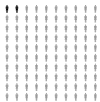Design of the BRISC study: a multicentre controlled clinical trial to optimize the communication of breast cancer risks in genetic counselling
- PMID: 18834503
- PMCID: PMC2576334
- DOI: 10.1186/1471-2407-8-283
Design of the BRISC study: a multicentre controlled clinical trial to optimize the communication of breast cancer risks in genetic counselling
Abstract
Background: Understanding risks is considered to be crucial for informed decision-making. Inaccurate risk perception is a common finding in women with a family history of breast cancer attending genetic counseling. As yet, it is unclear how risks should best be communicated in clinical practice. This study protocol describes the design and methods of the BRISC (Breast cancer RISk Communication) study evaluating the effect of different formats of risk communication on the counsellee's risk perception, psychological well-being and decision-making regarding preventive options for breast cancer.
Methods and design: The BRISC study is designed as a pre-post-test controlled group intervention trial with repeated measurements using questionnaires. The intervention-an additional risk consultation-consists of one of 5 conditions that differ in the way counsellee's breast cancer risk is communicated: 1) lifetime risk in numerical format (natural frequencies, i.e. X out of 100), 2) lifetime risk in both numerical format and graphical format (population figures), 3) lifetime risk and age-related risk in numerical format, 4) lifetime risk and age-related risk in both numerical format and graphical format, and 5) lifetime risk in percentages. Condition 6 is the control condition in which no intervention is given (usual care). Participants are unaffected women with a family history of breast cancer attending one of three participating clinical genetic centres in the Netherlands.
Discussion: The BRISC study allows for an evaluation of the effects of different formats of communicating breast cancer risks to counsellees. The results can be used to optimize risk communication in order to improve informed decision-making among women with a family history of breast cancer. They may also be useful for risk communication in other health-related services.
Trial registration: Current Controlled Trials ISRCTN14566836.
Figures



References
-
- Visser O, Siesling S, van Dijck JAAM. Incidence of cancer in the Netherlands 1999/2000 Eleventh report of The Netherlands Cancer Registry. Utrecht: Association of Comprehensive Cancer Centres; 2003.
-
- Ford D, Easton DF, Stratton M, Narod S, Goldgar D, Devilee P, Bishop DT, Weber B, Lenoir G, Chang-Claude J, Sobol H, Teare MD, Struewing J, Arason A, Scherneck S, Peto J, Rebbeck TR, Tonin P, Neuhausen S, Barkardottir R, Eyfjord J, Lynch H, Ponder BA, Gayther SA, Zelada-Hedman M. Genetic heterogeneity and penetrance analysis of the BRCA1 and BRCA2 genes in breast cancer families. The Breast Cancer Linkage Consortium. Am J Hum Genet. 1998;62:676–689. doi: 10.1086/301749. - DOI - PMC - PubMed
Publication types
MeSH terms
Associated data
LinkOut - more resources
Full Text Sources
Medical
Research Materials

